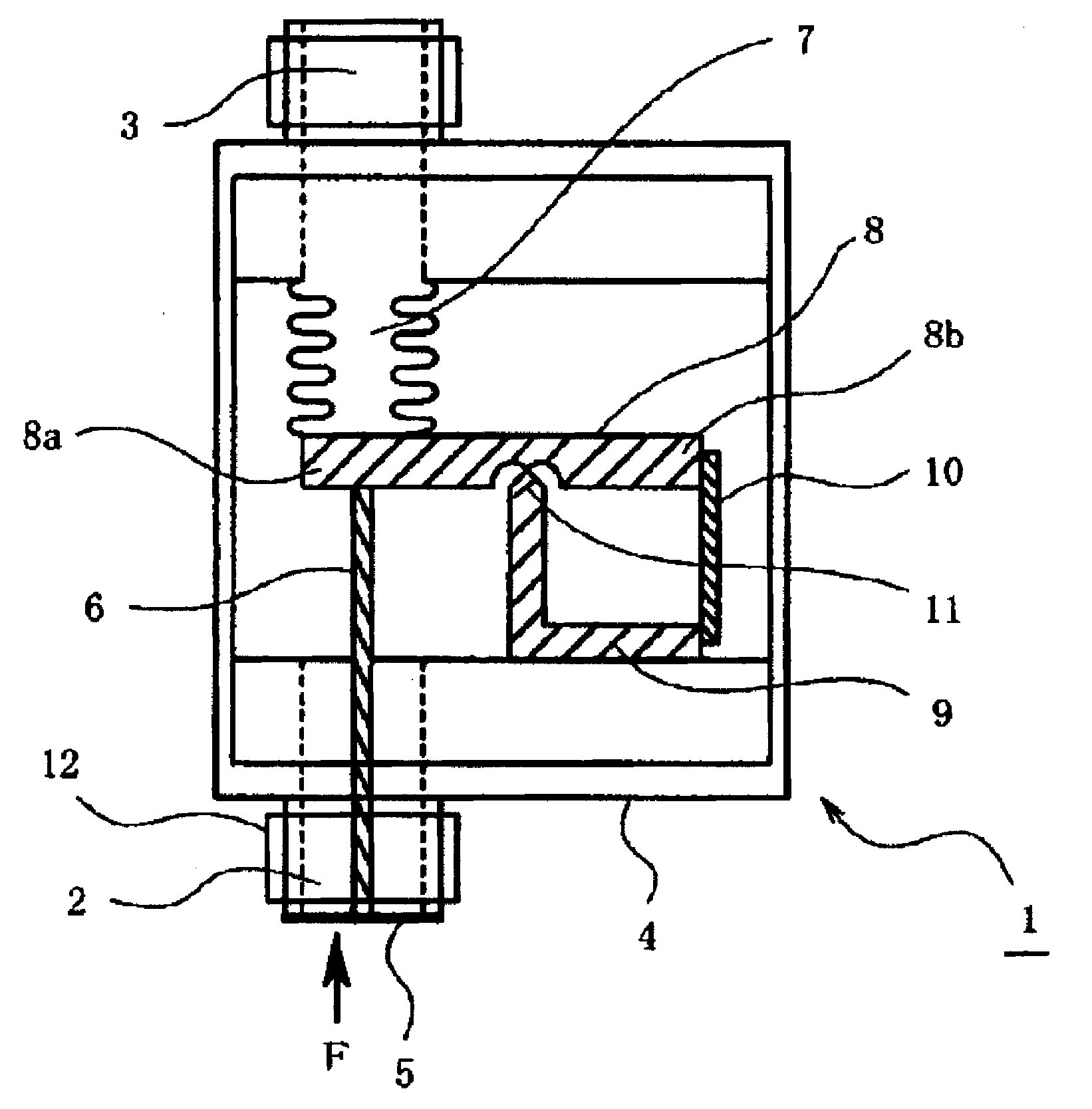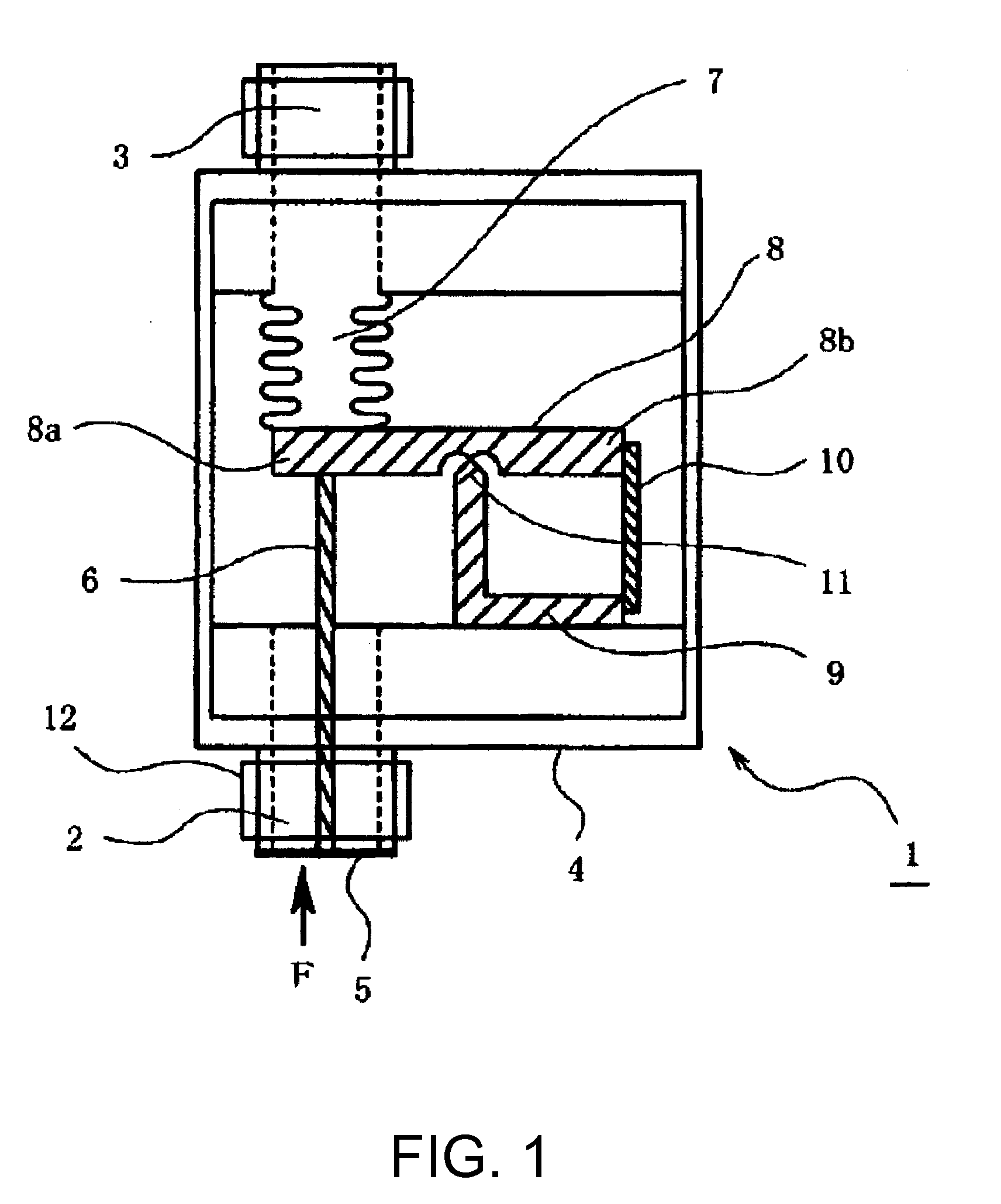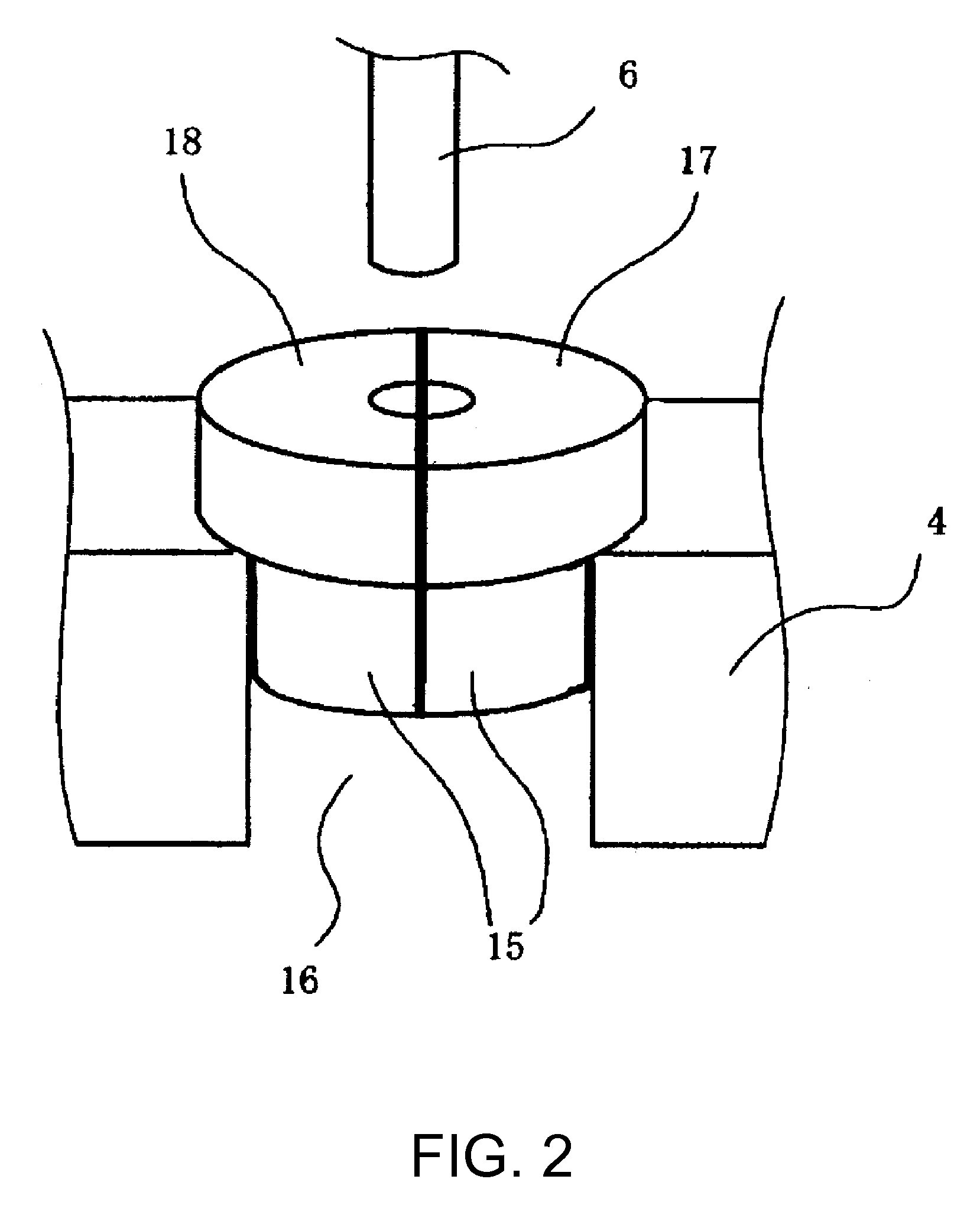Pressure sensor and method for manufacturing the same
a technology of pressure sensor and manufacturing method, which is applied in the field of pressure sensor, can solve the problems of degrading the degrading the temperature characteristics of the pressure sensor, and the inability of the pressure sensor using oil b>110/b> according to related art to measure the pressure of pure fluid that disfavors foreign substances, etc., and achieves improved q-factor of pressure sensing elements, improved temperature characteristics of the pressure sensor, and high thermal expansion
- Summary
- Abstract
- Description
- Claims
- Application Information
AI Technical Summary
Benefits of technology
Problems solved by technology
Method used
Image
Examples
first embodiment
[0055]FIG. 1 is a schematic cross-sectional view illustrating a structure of a pressure sensor according to the invention.
[0056]A pressure sensor 1 shown in FIG. 1 includes a housing 4 which is a rectangular container with a vacuumed interior. Two pipe sleeves, serving as first and second attachments, are installed, protruding from the opposing end surface plates of the housing 4, and are coaxially arranged to face each other. The two pipe sleeves respectively include a first pressure input orifice 2 and a second pressure input orifice 3 which communicate to an interior of the housing 4. Components which will be described hereafter are housed inside the housing 4. A first (pressure receiving) diaphragm 5 is attached to an edge of the first pressure input orifice 2. The first diaphragm 5 is exposed outside the housing 4 and bends in accordance with a pressure of fluid subjected to measuring. A first shaft 6 (a first force transmitting member) is attached to the first diaphragm 5, wit...
second embodiment
[0076]a pressure sensor according to the invention will now be described.
[0077]FIG. 3 is a schematic view illustrating a structure of the second embodiment of the pressure sensor according to the invention. The same signs and numerals are used for the same parts as in FIG. 1, and their descriptions are omitted.
[0078]In the first embodiment, the bellows 7 is used as the pressure receiving means for the atmospheric pressure. Alternatively, in the second embodiment, a second diaphragm 22 and a second shaft 23 are used as the pressure receiving means for the atmospheric pressure. The second diaphragm 22 and the second shaft 23 are similar to the ones used as the pressure receiving means for the fluid subjected to measuring. As shown in FIG. 3, the second diaphragm 22 is formed so as to be exposed at an external surface of the housing which is at a opposite side from the first diaphragm 5, and one end of the second shaft 23 is joined to the center of a back side of the pressure receiving...
third embodiment
[0083]Subsequently, a pressure sensor according to the invention will now be described.
[0084]FIG. 4 is a schematic view illustrating a structure of a third embodiment of the pressure sensor according to the invention. The same signs and numerals are used for the same parts as in FIG. 1, and their descriptions are omitted. The pressure sensors according to the first and the second embodiments of the invention measure a gauge pressure (relative pressure), i.e. a pressure represented by having the atmospheric pressure as a reference of zero, and therefore the pressure receiving means for the atmospheric pressure is coupled to the end 8a of the swing arm 8. A pressure sensor according to the third embodiment measures an absolute pressure with respect to a vacuum state as a reference of zero. Therefore, only the pressure receiving means for the fluid subjected to measuring is coupled to the end 8a of the swing arm 8, and the pressure receiving means for the atmospheric pressure is remove...
PUM
 Login to View More
Login to View More Abstract
Description
Claims
Application Information
 Login to View More
Login to View More - R&D
- Intellectual Property
- Life Sciences
- Materials
- Tech Scout
- Unparalleled Data Quality
- Higher Quality Content
- 60% Fewer Hallucinations
Browse by: Latest US Patents, China's latest patents, Technical Efficacy Thesaurus, Application Domain, Technology Topic, Popular Technical Reports.
© 2025 PatSnap. All rights reserved.Legal|Privacy policy|Modern Slavery Act Transparency Statement|Sitemap|About US| Contact US: help@patsnap.com



